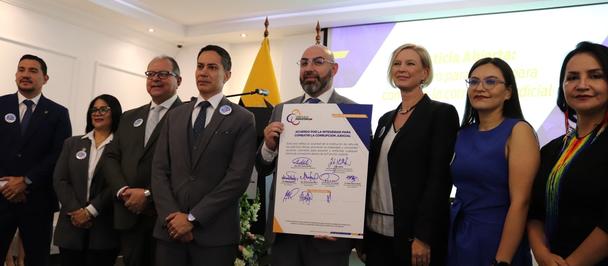LEAVING NO ONE BEHIND: Redesigning municipal services for people experiencing homelessness
16 de Octubre de 2023
"I left my life and family in Loja to start spending my days and nights on the streets of the historic center of Quito. It's a daily struggle to find food, to stay warm, to have a safe place to sleep, and to figure out what to do during the day. Nobody chooses to be in this situation, but it happens. We are treated as invisible, and people don't understand us. I want to have a job, an opportunity to get out of all this, and to show my family that I am valuable.”
(Hugo's Testimony)
Hugo on his first day of work as a recycler
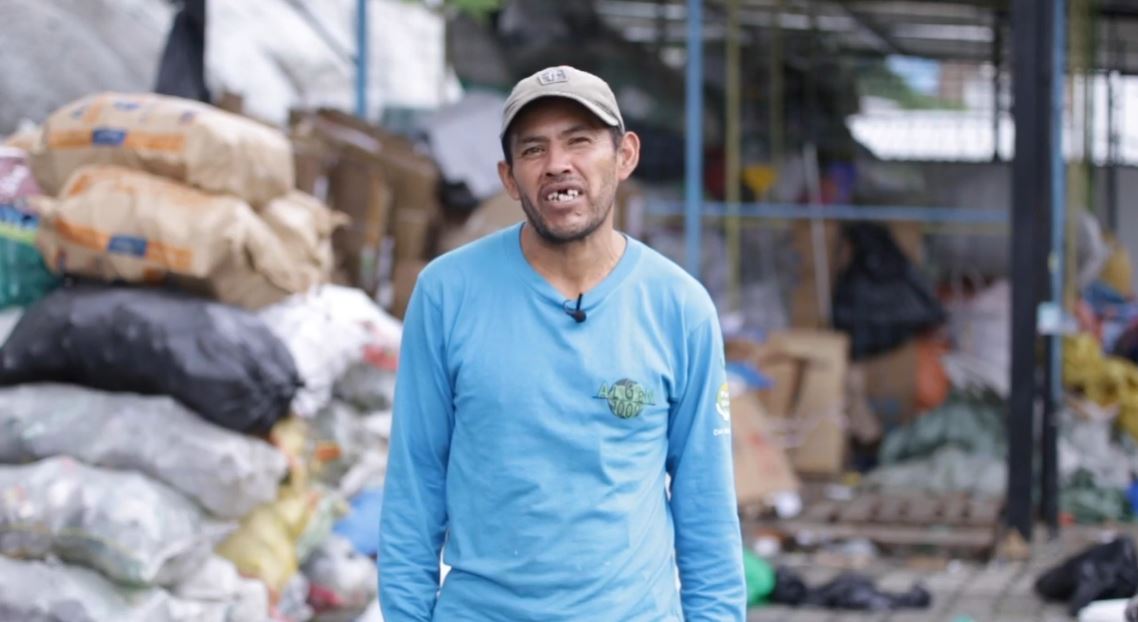
Taken by Municipal Unit San José of Quito, april 2023, Quito.
This testimony represents a brief glimpse into the reality, pain, and life aspirations of people experiencing homelessness. In response to this, the Municipal Unit San José of Quito (Patronato) decided to strengthen its municipal services for individuals experiencing homelessness, with a focus on finding solutions through public innovation processes. The UNDP Accelerator Lab supported the Patronato in enhancing the capacities and knowledge of its officials in public innovation and in implementing a pilot project aimed at improving services for people experiencing homelessness.
- Public Innovation: a mechanism to address the needs of vulnerable people
To strengthen the capacities of institutions in public innovation, it is essential to have a clear understanding of what public innovation is and why it serves as a powerful mechanism for addressing the needs of citizens.
Public innovation involves the public sector's capacity to engage with citizens to enhance the efficiency, effectiveness, and quality of government services, thereby contributing to improved governance and social well-being.
The first crucial step is to demystify what public innovation is not and challenge paradigms that may hinder public officials from practically implementing it.
Technological Myth. Public innovation is not limited solely to the realm of technological innovation. Incorporating digital and technological tools is just one facet of it.
Expert Myth. Public innovation is not exclusively reserved for geniuses or experts. In fact, anyone can learn to implement methodologies that facilitate the generation of creative solutions in the public sector and participate in the idea generation process.
User Interaction Myth. Interaction with users should be continuous throughout the public innovation process, not just at the end. It is essential to involve them from design to evaluation, considering them as part of the team and fostering a working relationship based on trust, commitment, and respect, particularly regarding the time they dedicate to this process.
Therefore, public innovation, through collaborative methods and co-creation processes, allows for the precise identification of concerns and expectations of the general population, and, with a greater emphasis, those of vulnerable individuals. By involving these individuals directly in the solution design process, it ensures that the responses are genuinely relevant and effective, deeply understanding the specific needs of their context.
Empathy workshop with people experiencing homelessness
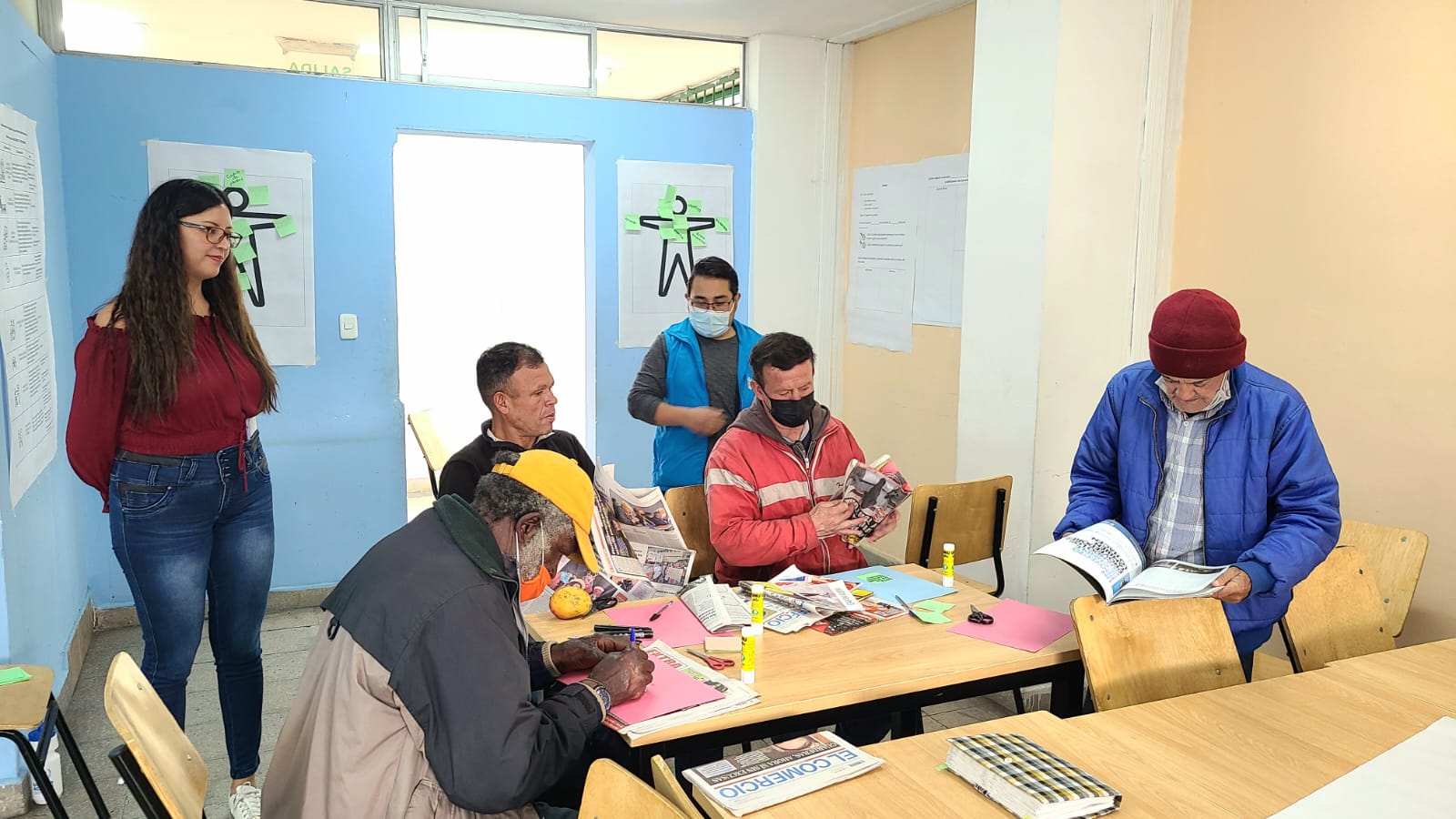
Taken by Ana M. Grijalva, december 2022, Quito.
- Applying Public Innovation: co-creating solutions between officials and homeless individuals
The best way to learn to innovate is by doing it! Alongside the Patronato team, we worked with the planning, citizen initiatives, and project areas to understand the main challenges faced by people experiencing homelessness when accessing municipal public services. To co-create innovative and creative solutions to these challenges, we used the Design Thinking methodology. Here are the main actions and reflections that follow.
Design Thinking methodology
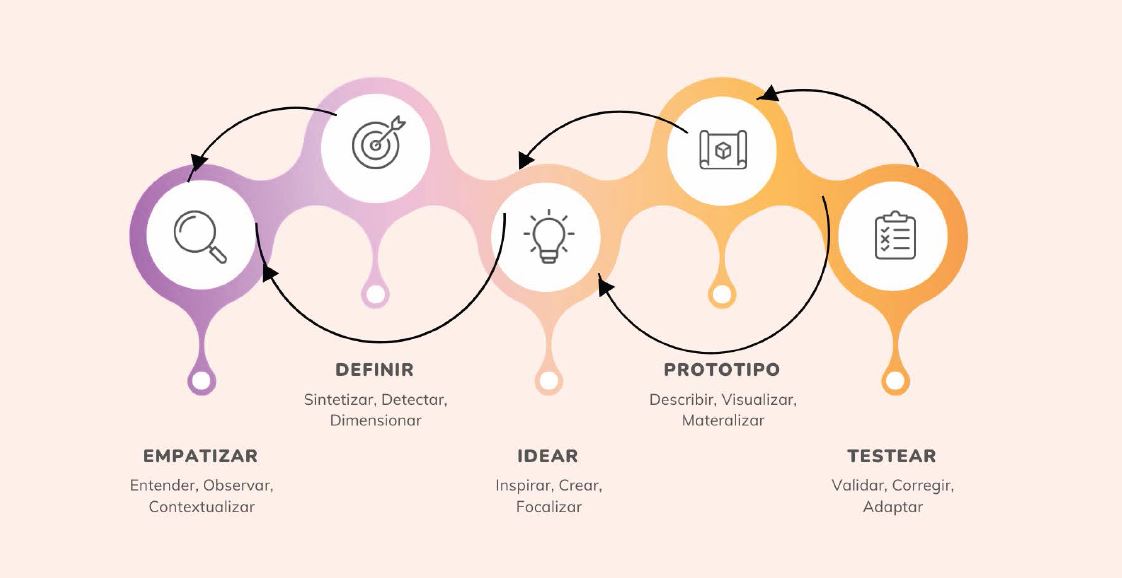
Elaborated by Accelerator Lab, april 2023.
Step 1: Empathize.
Actions: Information was gathered from people experiencing homelessness to understand their needs and priorities. Empathy and collaboration minimized personal biases among public officials and homeless individuals, promoting horizontal relationships. This was crucial for the co-creation of effective solutions in the innovation process.
Reflections: The adoption of a new collaborative work methodology marked a significant change in the Patronato team's dynamics, which was not used to involving users. Additionally, the execution of a faster and more practical immersion process into the problem represented an unusual approach for public officials.
Step 2: Define the Problem.
Actions: Deeper understanding of the problems was achieved through workshops and interviews with people experiencing homelessness. It was identified that one of their main desires is to improve their economic situation, while their primary barrier to doing so is their mental health and emotional instability. The problem was thus defined as: "How can we contribute to providing means of livelihood for people experiencing homelessness in the Historic Center of Quito?"
Reflections: Providing services to people experiencing homelessness is a complex challenge that involves simultaneously conducting several comprehensive projects to improve their mental health, integration into society, and financial stability. Framing the scope of this process within the specific services of the Patronato was a challenge.
Diagram and photographic record of the recycling prototype
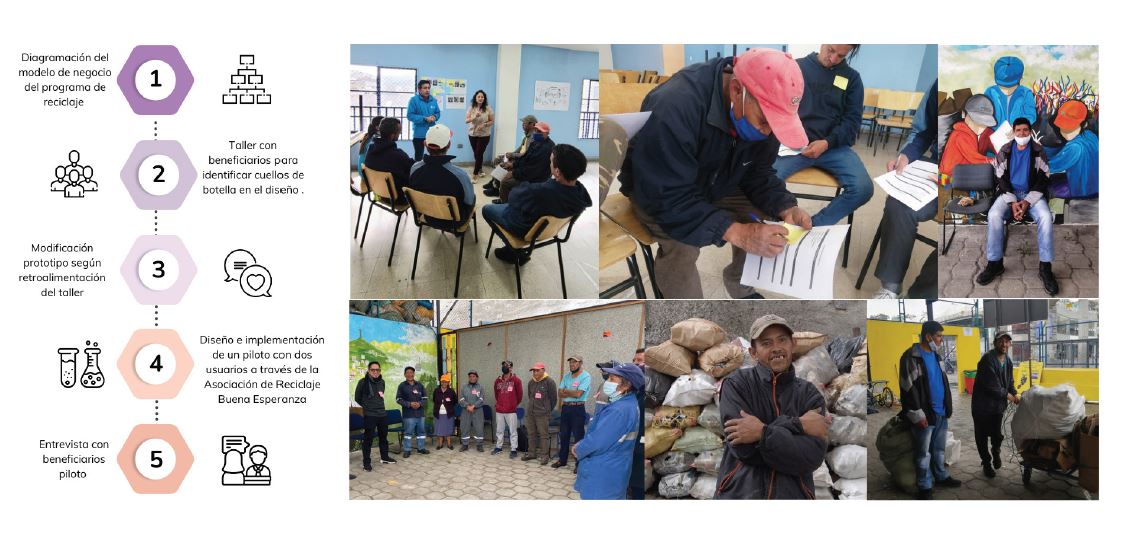
Elaborated by Accelerator Lab, april 2023.
Step 3: Ideate.
Actions: Two viable and high-impact ideas for generating livelihoods for people experiencing homelessness were identified and selected: i) creating a recycling program, and ii) designing a maintenance contracting process by the Patronato. A third solution focused on strengthening the psychological therapy services at the shelter for these individuals.
Reflections: The main challenge in bringing the ideas to life was to think creatively about how to design them so that they align with and are valid within the existing public regulatory frameworks. Additionally, coordinating swiftly with external stakeholders who play a significant role in these solutions proved to be a challenge.
Steps 4-5: Prototype - Test.
Actions: Three iterations were conducted between the testing and prototyping stages, refining the three solutions (two related to livelihoods and one to mental health) to meet user needs and leveraging the capabilities of the actors involved in implementation. The active participation of people experiencing homelessness in the process increased as results materialized.
Reflections: To scale the prototyped solutions, it is essential to finalize the institutionalization of these new solutions and incorporate them into the institution's processes, ensuring that a greater number of users can access these services.
Finally, the experience of working with the Patronato demonstrates that public innovation processes are agile, cost-effective, and have a greater impact when users are included in the design and development of solutions. The three prototypes developed in response to the needs of people experiencing homelessness can be replicated and scaled, transcending various areas of the institution's management or different levels of public administration, thus promoting true innovation in policy and public processes.
We invite you to learn more about the wonderful and successful work carried out in collaboration with the Patronato through our Report of Results and Experiences. If you want to participate in or contribute to public innovation processes, you can contact ana.grijalva@undp.org
About the autor:

 Locations
Locations


